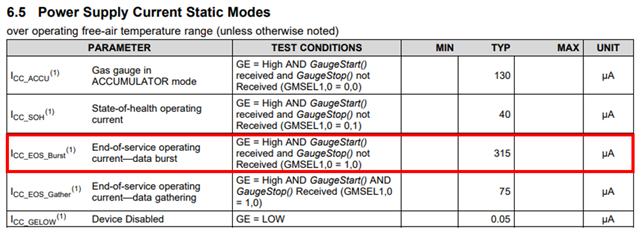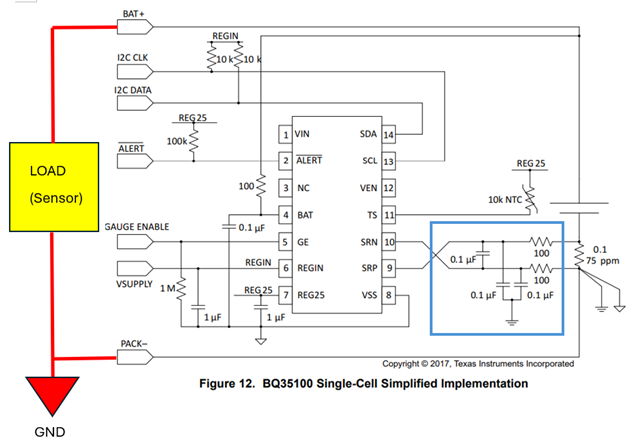Tool/software:
I am currently developing a humidity sensor-based wireless sensor node powered by a primary battery, either lithium thionyl chloride (LiSOCl₂) or lithium manganese dioxide (LiMnO₂). The objective is to operate the sensor for 5 to 10 years without battery replacement. To monitor the remaining battery life, I plan to integrate a fuel gauge IC.
The sensor operates for 20 µs during each measurement cycle and remains in sleep mode for the rest of the time. The measurement interval can be 5, 10, or 15 minutes. Currently, the active current of the sensor module is 20 mA, and the sleep current is 60 µA.
I am considering using the BQ35100 for fuel gauging.
Query: Can the BQ35100 be put into sleep mode during the sensor's sleep period to reduce average current consumption? Will doing so affect the accuracy of the fuel gauge’s readings or its ability to track the battery’s capacity over time?
Additionally, could you recommend other fuel gauge ICs compatible with both lithium thionyl chloride (LiSOCl₂) and lithium manganese dioxide (LiMnO₂) batteries?
Thank you for your assistance.



